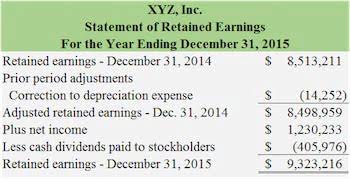Construct a Budgeted Income Statement as Part of Your Master Budget

Performance evaluation involves comparing the actual results to the results projected in the budget. Comparing budgeted activities to actual results is a widely used method for overall performance evaluation at contribution margin all levels of the organization. For example, management can evaluate various departments or activities to see if they met expected targets or stayed within budgeted spending limitations. This feedback can be used to correct organizational inefficiencies or in some cases to justify adjusting budgeting projections and assumptions going forward. The budget is created prior to the time period covered by the budget. The completed budget is then used by management to help plan operations including activities like scheduling production, purchasing materials, and making capital investments.
Practice Video Problem 1: Sales and production budgets
The Budgeted Income statement can be prepared quarterly or yearly. However, it is advisable to prepare the current year’s financial projections at quarterly intervals to monitor the actual performance compared to budgeted numbers at the end of every quarter. It is merely the combination of the Sales/Revenue Budget, Cost of Goods Sold Budget, Operating expense budget, and cash budget. Because long-term asset purchases occur at the end of the year,depreciation will begin the following year. Thus depreciation shownin the manufacturing overhead and selling and administrativebudgets will not be affected until the following year. The cashoutlay required to make these purchases is reflected in the cashbudget presented next.

Practice Video Problem 2 Part 1: Budgets to determine product costs and cost of goods sold

The selling and administrative expense budget allocates $150,000 for marketing and $100,000 for administrative salaries. The cash budget forecasts $1,000,000 in cash receipts from sales and $900,000 in cash disbursements, resulting in a net cash inflow of $100,000. The capital expenditures budget includes $50,000 for new equipment, while the budgeted income statement shows a net income of $200,000 after accounting for all revenues and expenses. Finally, the budgeted balance sheet reflects total assets of $1,500,000 and total liabilities and equity of the same amount.
Construct a Budgeted Income Statement as Part of Your Master Budget

It would be very easy to expand the illustration to reflect additional interactions and budgets (e.g., the coordination of a long-term capital spending budget). The base or foundation for the master budget is an assessment of anticipated sales volume via the sales budget. The expected sales level drives both the production plans and the selling, general, and administrative budget. Factory overhead may be applied based on labor, but it is ultimately driven by overall production. The accompanying graphic is a simplified illustration of these budget building blocks. The collection of budgets for an organization are known as the master budget.

- These comparisons will help identify strengths and weaknesses, areas for improvements, and potential staffing changes.
- The bottom line of the budgeted income statement,net income, is gross margin minus selling andadministrative costs.
- The budget is created prior to the time period covered by the budget.
- The master budget is composed of several interconnected budgets that collectively form a complete financial plan.
- To continue the water wiz illustration, assume that each unit requires 0.25 direct labor hours to complete.
- The sales budget is most important becausesales projections drive the other budgets.
For example, assume that a worker the budgeted income statement is part of which element of the master budget? can pour and finish one unit in 15 minutes. The direct labor hours needed to produce a single unit is .25 of an hour (15 minutes / 60 minutes in an hour). The sales budget reflects forecasted sales volume and is influenced by previous sales patterns, current and expected economic conditions, activities of competitors, and so forth.
The resulting total direct labor hours are multiplied by the expected hourly cost of labor. Shehadeh assumes that the cost of direct labor will be funded in the quarter incurred. A master budget is a comprehensive financial planning document that consolidates all of a company’s individual budgets into a single, unified plan. It serves as a roadmap for the organization’s financial activities over a specific period, typically a fiscal year. The master budget includes projections for sales, production, expenses, cash flows, and financial statements, ensuring that all departments align with the company’s strategic goals.
Labor, Overhead, And SG&A Budget
The first tab is for the sales budgetworksheet, the second tab is for the production budget worksheet,the next tab is for the direct materials purchases budgetworksheet, and so on. All these worksheets are linked so changes tocertain estimates are reflected in the appropriate budgetschedules. The bottom section of the cash budget is where the ending cashbalance is calculated for each budget period. The managerresponsible for cash planning, typically the treasurer, scrutinizesthis section carefully. Some organizations must borrow cash to fundthe timing difference between when cash is used for production andwhen cash is received from sales. The cash budget will signal whenshort-term borrowing is necessary and allows time for the treasurerto arrange for financing.
Introduction to the Master Budget
- Most fixed items will be the same each quarter, although some fixed costs, such as an advertising campaign, can fluctuate periodically.
- Most organizations use historical data and current operating plans to estimate budgeted amounts.
- Budget reports are easy to create, and the systemprovides real-time reports for analysis and project management.
- Lenders, potential investors, and others have a keen interest in such information.
Further, the sidebar notes also indicate that the average overhead rate (fixed and variable together, applied to the total labor hours for the year) is $13 per hour. This information is useful in assigning costs to ending inventory. Assuming an average-cost method, ending finished goods inventory can be valued as shown on the Finished Goods spreadsheet. Production is also a function of the beginning finished goods inventory and the desired ending finished goods inventory. The budgeted units of production can be calculated as the number of units sold, plus the desired ending finished goods inventory, minus the beginning Airbnb Accounting and Bookkeeping finished goods inventory. In planning production, one must give careful consideration to the productive capacity, availability of raw materials, and similar considerations.
The Master Budget Preparation Process
- Product costs include the costs for direct material, direct labor, and manufacturing overhead.
- This product enables movie theaters to replace the usual lettered signs with actual videos to promote the “now showing” movies.
- For example, if the lease payment is $2,000 per month it is easy to project in the upcoming budget that yearly rent expense will be $24,000.
- This chapter has made several references to the fact that budgets will be used for performance evaluations.
- Fixed costs are the same in total regardless of the quantity sold.
- The budget is used to control operations during the time period covered by the budget.
Shehadeh started the new year with 525 units in stock, and planned to end the year with 700 units in stock. For this illustration, use the data provided by the other budgets and prepare the budgeted income statement. Manufacturing overhead is typically classified as variable or fixed. Variable manufacturing overhead costs are the same per unit but total costs depend on the quantity produced. Fixed manufacturing overhead costs are the same in total regardless of the quantity produced. It is common for the number of direct labor hours needed to produce one unit to be more or less than one unit.






















